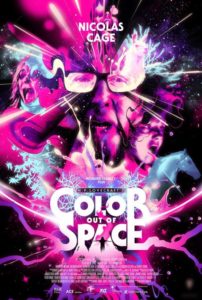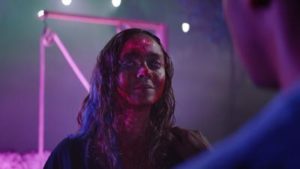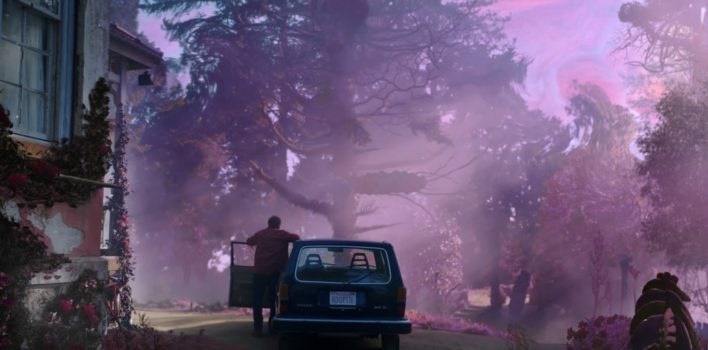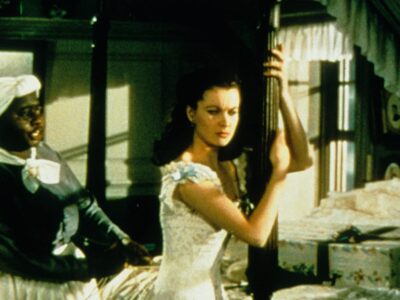Review| Color Out of Space (2020)
 I have written elsewhere about the troubles that surround the legacy of H.P. Lovecraft and the shadow his oeuvre casts over the horror community, for both good and ill. His stories continue to inspire literature, film, television, and even music to this day. Thankfully, an artist’s influence is not wholesale for any of us, we can appreciate the words fashioned by Lovecraft’s hand while recognizing the toxic milieu in which they were forged. After all, none of us are righteous—though this phrase shouldn’t be used to cover over the sins of our heroes all the same.
I have written elsewhere about the troubles that surround the legacy of H.P. Lovecraft and the shadow his oeuvre casts over the horror community, for both good and ill. His stories continue to inspire literature, film, television, and even music to this day. Thankfully, an artist’s influence is not wholesale for any of us, we can appreciate the words fashioned by Lovecraft’s hand while recognizing the toxic milieu in which they were forged. After all, none of us are righteous—though this phrase shouldn’t be used to cover over the sins of our heroes all the same.
It is no surprise that Lovecraft remains one of those authors whose work often influences horror cinema but is seldom adapted for the big screen. His work relies on the limits of human rationality in investigating and exposing any reality that may exist beyond this material realm. His creatures or cults or vague dread are often briskly described, more the sketch of a dementia patient grasping for a memory than a journalist’s detail. Generally speaking, if you can imagine it, you’ve failed to really grasp the existential threat of Lovecraft’s stories. Yet there have been a handful of attempts throughout the years, some better than others, none of them rising much beyond cult status. Guillermo Del Toro’s name has been tied on again and off again with the ever-elusive adaptation of “At the Mountains of Madness.” If that were ever made, it might have the best shot at rising beyond “cult hit.”
It is fitting, then, that the first major Lovecraft adaptation in years comes from the pen of Richard Stanley, a director who had become all but a hermit since the fiasco around his last full-length motion picture, The Island of Dr. Moreau (1996). A reclusive director stumbles out into the public eye to tell the story of an evil so cosmic, so weird, and so dreadful that only the mixture of word, image, and sound can gift its hearers with belief. For those, like myself, who took this recluse’s bait now believe but are unable to relay the experience to the public in coherent form. Expression betrays us. We are but grasping for a paper straw in a Portland, Oregon restaurant. One must experience it to believe.
 In all seriousness, adapting what is arguably one of Lovecraft’s spookier tales about a meteorite hitting a patch of farmland in New England and emitting a color unseen before by human eyes and changing the being of all that lives in its blast zone is a tricky endeavor. One must have a secret weapon in their arsenal and Stanley’s is: Nicolas Cage. No actor can crank it up to 11 like Cage can. Coming in quick off the heels of his last surreal, colorful horror film, Mandy, Cage gives a performance that oscillates between self-aware Ward Cleaver and a much more sympathetic version of Trump-like flamboyance. Grounding Cage’s more insane moments is Joely Richardson, Tommy Chong, and a solid call sheet of relative newcomers all of whom are required to hold together a pretty crazy tale of madness, familial decay, and the creeping abyss.
In all seriousness, adapting what is arguably one of Lovecraft’s spookier tales about a meteorite hitting a patch of farmland in New England and emitting a color unseen before by human eyes and changing the being of all that lives in its blast zone is a tricky endeavor. One must have a secret weapon in their arsenal and Stanley’s is: Nicolas Cage. No actor can crank it up to 11 like Cage can. Coming in quick off the heels of his last surreal, colorful horror film, Mandy, Cage gives a performance that oscillates between self-aware Ward Cleaver and a much more sympathetic version of Trump-like flamboyance. Grounding Cage’s more insane moments is Joely Richardson, Tommy Chong, and a solid call sheet of relative newcomers all of whom are required to hold together a pretty crazy tale of madness, familial decay, and the creeping abyss.
Perhaps the most notable character in the film, Ward, is played by Elliot Knight. Ward is the hydrologist who witnesses the madness go down west of Arkham. He is playing the narrator of the film—same as the book—and he is black, something that Lovecraft would have probably had a venomous retort towards if he were still alive. In a post-credit interview at my screening, Knight spoke about how it was nice to be in a horror film where the black guy didn’t die. He could have gone further to say that it was nice to be in a Lovecraft adaptation where a black guy didn’t die and wasn’t being described in heightened racial descriptions and slurs—for an example, check out “The Shadow Over Innsmouth” or “The Horror at Red Hook.” Knight’s very presence and placement within the film is a blunt comment on the sordid beliefs of the original work’s author.
The film itself, while not as technically thrilling as Panos Cosmatos’ Mandy, is more crowd-pleasing and accessible to a mainstream audience. I was struck during the film’s first thirty minutes by how much care the family—the Gardners—was given by Stanley. I connected completely with the emotional ties between the members of the family and I could feel their backstory, though unknown to the audience, coursing through these performances. As we descended into the hyper-vibrant colors, body horror, gore, and the ranting and raving of Nathan Gardner (Cage), it is our concern and connection with these characters that keeps us grounded. It is the thing that wrests control from us as we descend with them into this weird and unknown world.

In the same interview, Patton Oswalt asked Richard Stanley what he is working on next and Stanley let loose that this film would eventually become a trilogy of Lovecraft adaptations. The next one he is writing is “The Dunwich Horror,” another fan favorite. One only wonders if the third film in this trilogy could potentially end in the holy grail of collaboration with Guillermo Del Toro on “At the Mountains of Madness.” While this would cause an implosion within the horror community, after seeing Stanley’s first adaptation I am on board for seeing whatever he decides to give us as well as making his presence known once again in the wider world of cinema.







